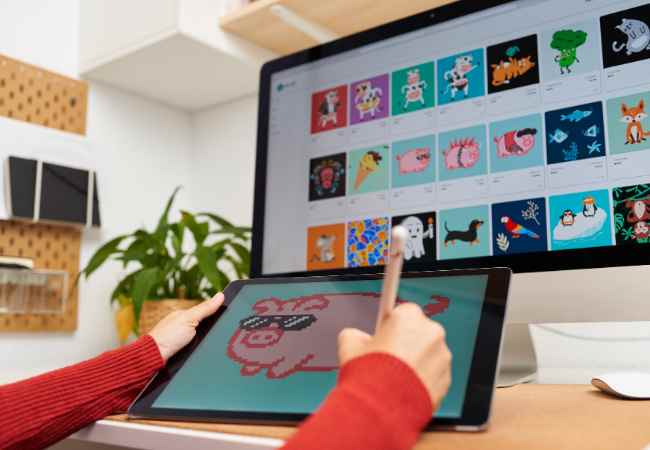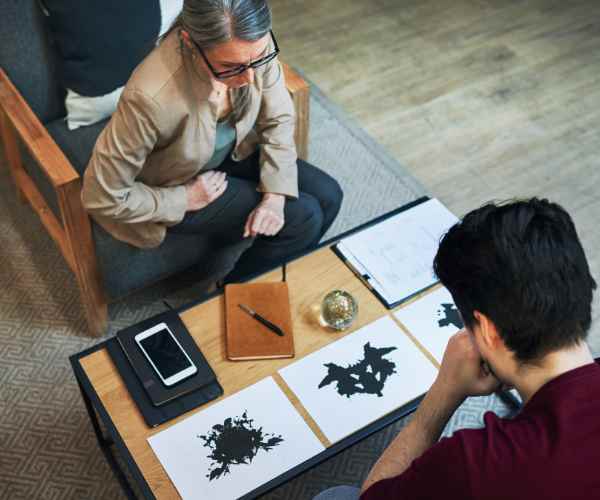The Artistic Approach towards the Environment can be viewed as more than just a catchy term. It arguably is a revolution shifting the perception of art and the world in fundamentally different directions.
Artists who combine the creative process with lasting environmental practices are making the art sector reconsider its contribution to mitigating climate change and ecological degradation.
This investigation of eco-art shows the how the movement focuses on green materials and new methodologies to achieve important objectives.
Environmental art is paving the way for change in how to utilize material to protect the environment, such as land art, to aid in building a better world for everyone.

What is Eco-Art? How Does This Artistic Expression Address Environmental Concerns?
Eco-art is a type of art that combines creativity and sustainability for the purpose of addressing environmental issues.
It comes as no surprise that Eco art emerged as a movement around 20th century when there was a lot of information disseminated about environmental issues, potential climate changes and global warming.
In an attempt to mitigate the impact that humans were having on their environment, Robert Smithson and Agnes Denes pioneered the concept of eco-art and incorporated land art into their work. One such example is Robert Smithons Spiral Jetty; made from rocks, salt crystals, and mud. It differs from his other works because it is the kind of artwork that can literally be called an ‘interaction’ with the surrounding landscape and an artwork that over time does not paint but gets painted.
Sustainability and urban growth could never get into the same sentence, however, the work of Agnes Denesisin 1982 would do exactly that. In 1982 she planted two acres of wheat in a landfill in lower Manhattan, New York and called it ‘Wheatfield: A Confrontation’.
Artists nowadays have begun embracing eco friendly materials in order to create their artwork and one example of such are recycled materials. The use of recycled materials discourages the use of new resources and inhibits waste which is one of the principles of sustainability. An example is Aurora Robson, a sculptor who uses organic complex forms created from used plastics challenging consumer pollution and waste.
Eco art is also incorporating new methods and strategies. Among others, upcycling (the transformation of waste byproducts into products of greater quality) is prevalent. Art can now engage people through public installations powered by sustainable means and contribute to expanding the idea of what art can be.
One example includes artist nancy holts sun tunnels displayed in the great basin desert. The sand art integrates large tunnels made of concrete which are positioned according to the sunrises and sunsets which provide natural light to be a vital aspect of the piece. As the environment transforms, the piece undergoes its fair share of changes as well, which ensures that the artwork retains its low carbon emissions and provides a stronger sense of connection to nature.
How Eco-Art is Effective in Creating Change and Raising Awareness?
By creating eco-art, artists contribute towards enhancing the society’s knowledge about the dire circumstances caused by environmental issues. For instance, Chris Jordan’s “Midway: Message from the Gyre” portrays the effect of plastic pollution on albatross babies in the Pacific Ocean. Such work serves as a reminder to people to change the lifestyle in which they consume resources without having regard for the impact they are making on the planet.
Another interesting avant-garde eco-art project that involves the community is the “Baltimore Water Wheel.” This project, designed by artist John Kellett, is an environmentally friendly solar powered trash interceptor that both cleans the harbor and educates the local community about water pollution and sustainable methods.
Nevertheless, environmental artists are not just artists – they are activists and policy influencers who want to protect the planet. This way, they stimulate dialogue about crucial environmental problems and can get the audience engaged to them and make a change.
Take for instance, Olafur Eliasson’s “Ice Watch” where 12 blocks of Greenland’s ice was placed on public streets. He started the installation as a breathtaking example of climate change and a valuable precursor for action against global warming. Although the installation took, a much more dire approach on the heat days to come. There’s a dire need to monitor and take actions on warming.
Each of these examples demonstrates how eco-art and activism nurture, besides provoking a shift in the societal mindset and legislation.
What Should You Consider In order To Source Eco-Friendly Materials For Eco-Art?
Materials are key facts when trying to start your eco-art journey, therefore choosing the right materials from the start is essential. Using eco-friendly materials is a practice that will help the environment, underserved. Use paper or even piece plastics or metals that would otherwise go to waste. For Mae Bing, she modifies wasted plastics into beautiful pieces of sculptures, elevated them to an artistic status. Even old furniture and textiles can be transformed and reused in new creations negating the necessity for virgin resources.
Try to be more aware of the materials you purchase and the type of clothing you choose. For instance, using organic materials like wood, stones or leaves can help your artwork feel attached to the ecosystem and limit carbon emissions. To cite an example, materials like stones can be used in creating land art since they are readily available at the site.
Case Study: For example, Andy Goldsworthy is a contemporary artist who emphasizes the use of natural transitory materials such as leaves and ice to build temporary installations for the art. He feels that this is a way through which nature can be preserved and chlorinated amine waste can be minimized.
DIY Projects: How Do You Produce an Eco-Friendly Land Art Work of Art?
Land Art is an excellent form of Eco Art that is simple to conceive since it stretches over a wide area and requires less effort and designing space. The best part is that materials used for land art are all sourced from the biophysical environment which means the art is too.
Identify a nearby environment such as a park, beach, or forest and check if their nudist available within that area. Gather natural materials available on site, such as leaves, stones, or sand. The only limitation is allowing modification of the existing environment and resettlements of the local ecosystem.
With such a project, no supplementary resources are needed and strengthens the bond between the environment and art. It can be as simple as arranging stones in the shape of a spiral, a la Robert Smithson’s Spiral Jetty.
Example: Nils-Udo, a land art master, creates, for example, bouquets of flowers, branches, and berries, which are then scattered to die. His works indicate how life is ethereal and worth protecting from the natural landscape.
Grasping Responsibility: How can One Integrate the Art Crafting Process in their Day to Day Life Sustaining Methods?
A definitive part of any eco-friendly art remains the non existent eco effect of the entire art crafting process. Make it a point to check on waste generation by reusing substances as much as can be done. This not only helps protect the environment but also spurns the imaginations to seek for better solutions.
For instance instead of new paint consider using vegetables, soil or charcoal to create color traces. This practice of sustainable art promotes a sense of unity by creating a bridge between one’s art and nature.
Research Study: A macroscale analysis done by the University of Leeds discovered that eco friendly materials such as natural pigments can trim the artwork carbon footprint by an amazing 40% . This pretty much showcases the effect that the materials used can have on sustainability.
Sustainability Tips: Use Renewable Energy: Set up your studio to run on renewable energy sources such as solar panels, which will help reduce the negative environmental impact even more. Water Conservation: Try to incorporate water saving strategies into your studio, with the help of a greywater system in the cleaning procedures. Eco-Friendly Options: Use eco-friendly options such as biodegradable brushes or non-toxic adhesives instead of the regular harmful supplies. Example: The “Green” Artist Residency in New York has an aim of promoting sustainable development within the arts and urges “green” practices among the artists in respect to their performance.
The program’s participants are asked to create works that leave as little negative environmental impact as possible, without sustainability being an afterthought but the objective of the work. The Future of Eco-Art: What Are the Emerging Trends and Opportunities? Trends to Watch: How Will Sustainable Development Goals (SDGs) Shape the Future of Eco-Art? SDG Goals will have a big impact on eco-art and including those that promote sustainable lifestyles and care for the environment. Everywhere art has been, its mission has shifted to fit the global goals of tackling such issues as the carbon footprint of the art business and sustainable development.
Example: According to the UN, art plays an important role in sustainable development, and specifically, in promoting a green way of living. Similarly, the UN Art for SDGs programs motivate artists to make art pieces that encourage transforming the world towards these goals.
This includes waste-reducing artworks making environmental sustainability more visible, resource efficiency and recycling are pardons to a sustainable future. Artworks showcasing the benefits of increasing circular economy principles are predicted to be built in larger quantities.
Data Point: In pace with a pulse check on the post-pandemic art world suggested by the World Economic Forum, there are signals markedly pointing out that the global art market is slowly beginning to see, responding to the sustainability movement, with a prediction that by 2030 25% of art institutions wiil run their programs through SDG agenda.
Technology and Eco-Art: How Will the Development of Digital Art Assist As A Marketing Tool For Eco-Friendly Moves?
Eco-artists have reason to be upbeat as the era of digital arts has a lot to offer. Everything online means a lower need for physical materials, which helps to not use up, waste natural resources. Also, through virtual reality and augmented reality, artists can build environments without any real-world construction, which helps the planet.
Refik Anadol, as one of the many artists, needs no incitement to use algorithmic and data technologies as tools for producing visual art pieces without the physical artist’s palette. His designs are at the nexus of art and technology with a focus on eco sustainable development, thereby redefining the possibilities of eco-art.
Digital artwork can also be done, with renewable energy sources facilitating even less of an impact. If servers and equipment are powered with renewable resources, then this actively supports further minimisation of ecological devastation.
According to the carbon trust, there’s good reason to believe that with the correct energy efficiency measures in place, digital art will have the capabilities to reduce the overall carbon emissions within the creative sector by half.
How Are Schools Incorporating Sustainability into Art Curricula? Eco-Art in Education
Education is probably the most crucial piece of the puzzle when it comes to the future of economists and eco-artists in particular. The shift is already underway with institutions developing eco friendly art programs that inculcate a sense of environmental responsibility among students through design oriented courses.
Referring to an initiative they state: students participate in Eco-School Arts initiatives to learn how to make artistic creations from environmental friendly waste materials during overseas trips, while painting, sculpting, or engaging with the ocean and wildlife in the UK and other countries.
Students appreciate the dangers of their material selection and the necessity of balancing their artistic endeavors with a sustainable lifestyle. These values, if inculcated in them from a young age would ensure that the next generation of artists would be able to deal with the environmental issues through artistic means more effectively.
Research Study: A study by the Harvard University reveals that furthering a student’s education by including sustainability in their art education, helps them in their environmental conscience and also augments the critical and creative capacities – abilities which are now crucial to overcome the climate change which is threatening our civilization.
Trends in Education:
Sustainable Workshops: Schools and colleges have begun conducting workshops that emphasize on sustainable art so that students appreciate the significance of use of environmentally friendly materials in sustainable designs.
Digital Art Integration: With the growing popularity of digital arts, schools are placing more and more emphasis on the advantages of using digital media art that does not require too much physical material and renewable energy use.
FAQs about Eco-Art
What materials can I use for eco-art?
Eco-art can take advantage of eco-friendly art materials which focus on use of materials that do not pollute the environment. Some of these are, Recycled Materials: These include materials like recycled paper, plastics, metals, textiles. These assist in minimizing waste and preventing goods from being disposed of at dumps. Artist Aurora Robson, for example, uses rubbish plastic to make sculptural pieces that transform waste into something significant.
- Natural Materials: Encompassing leaves, wood, soil and stones, these materials help appreciate and create eco-friendly art. Land art also uses these raw resources to design sculptures that interact with nature. Leaves, stones and other natural materials are frequently used just to make transient art by Andy Goldsworthy which is attached with its surrounding.
- Eco-Friendly Alternatives: Look for eco-friendly options such as sustainable fabrics, biodegradable or non-toxic paints and even renewable resources. For example, natural dyes made from plants can potentially replace synthetic options which have a negative impact on the environment. Natural paints made from clay and minerals are also helpful in combating pollution as they are a sustainable option.
- Last Point: As stated in a report published by the Journal of Cleaner Production, the utilization of recycled materials in the art is estimated to have a lower carbon footprint of 50% in regard to the employment of new materials.
How can I make sure my art is truly sustainable?
In order to validate your art in the framework of sustainable development, analyze each and every detail of your procedure.
- Material Sourcing: Select materials which have low carbon emissions. Select recycled, up cycled and even fabric which is naturally sourced. Make sure those materials suppliers practice sustainable methods.
- Production Process: Integration of new practices that minimize waste creation. For example, use scrap from older projects and digital tools for the art work which will lessen reliance on physical resources. You can utilize zero waste design policies to lead your process so that all materials are used in the most effective manner.
- Final Product: Always think about your artwork after you are long gone. The artwork produced must be resistant and must be capable of being recycled or embellished whenever it is useful or of not use anymore. For instance, Holt’s land art use has the capability of amalgamating with the surroundings thereby creating less waste as it matures.
- Research Study: The University of Cambridge noted that up to 30% of total lifecycle environmental impacts could be reduced through implementing sound eco architecture principles in the processes of creating an art piece.
What are some examples of famous eco-artworks?
Eco artworks which can be seen to encompass vernacular principles of environment are:
The Spiral, by Robert Smithson: This is a large installation in land art made in 1970 and comprises earth and rocks made into a spiral shape into the Great Salt Lake. The piece depicts the relationship between man’s systems and natural processes, with emphasis on how humans abuse the environment.
Agnes Denes has faced criticism from urban planners for her work involving the creation of a wheat field in the urban park located in battery park Manhattan. This art was referred to as land art, and it was commissioned in the year 1982. However, it’s worth noting that she has faced criticism for her approach Eco-art.
Take McCarthy and Ryan for example, they had previously collaborated together for a public exhibition where they crafted several gates and placed them in Central Park and referred to this art performance as The Gates. The project aimed at working with already used materials and aimed to communicate with the already situated public in the park.
Art has rendered immense insightful projects which can be viewed both in a historical context and from a modern context such that these projects connect art with global awareness and global warming, for instance, in November 2019 ELIASSON’s ICE WATCH project uses actual blocks of black ice taken from the ocean to emphasize the approach of climate change.
What can practitioners of eco-art do to stimulate environmental issues?
Some aspects eco-art can tackle are through:
- Bringing issues to the forefront: Campaigns that emphasize climate change reach a wider audience. Their focus on environmental challenges revolves around topics such as global warming and ice melting, notably with ice floating installations depicted by Olafur Eliasson.
- Encouraging Change: Many eco-art practitioners create art that encourages societies to protect the environment. To fuel such activism, it is important for people to think of art as a relevant influencer that instigates action. Banksy, through many of his works, has shed light on the failures of geopolitical leaders in taking adequate measures to protect the environment.
- Policy Development: Eco-art incorporates and tackles environmental issues by sparking climate crises which pressures the decision makers in any state around the world to combat these challenges.
- Case Study: The Eco-Arts Foundation has presented evidence that eco-art initiatives have resulted in heightened community mobilization alongside the quickening of policy frameworks at the waste management and renewable energy levels.
Conclusion
Eco-Art: Sustainability and Creativity Combined is much more than a mere fragment, it stands as a core ideology as a thinking aspect that alters our approach with the atmosphere. By practicing art sustainability and putting creative thoughts into work, they are part of way in designing the sustainable world.
Although you are a seasoned artist or a budding one, there are ample opportunities to go green in them, Right from using things that can be spoilt to getting deep into the world of digital art, the channels to save the world are many.
Do not forget: Eco-art is not just about making the art, on the contrary it is designed for people to be equipped with ideas that are life compliant and able to change the dimensionality. Eco-Art has the ideal goal of ensuring that the real art is adopted, thus safeguarding and enhancing the conditions for people in the generations to come.
More Post
- Surrealism and the Subconscious: Exploring Dreamlike Imagery
- How Warhol’s Vision Continues to Shape Modern Culture? – Pop Art’s Legacy
- Exploring Minimalism in Art and Its Lasting Influence -The Power of Simplicity:
- Abstract Adventures: Breaking Down Abstract Art
- How do Classic Art and Architecture Shape Modern Masterpieces? Reviving Renaissance Techniques





